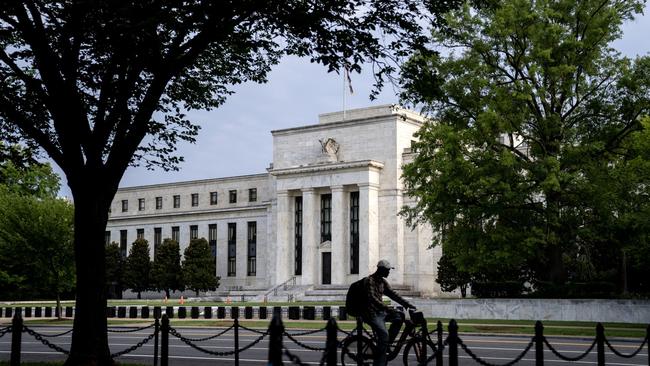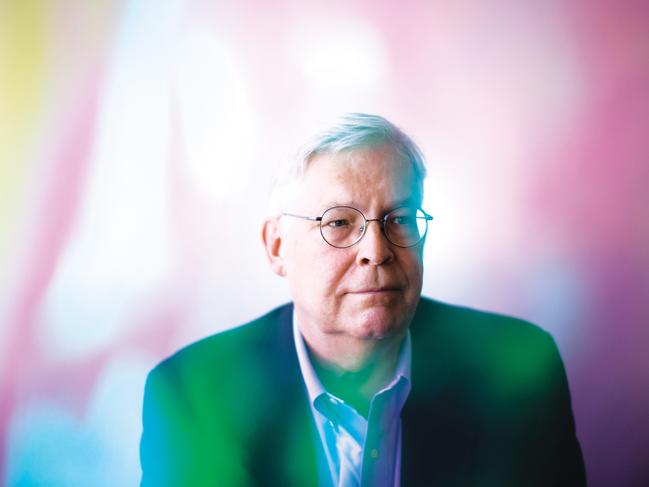Volatility ‘likely to rise’ across global markets, says Strategist founder Larry Jeddeloh
If China does worse than expected there could have a selloff in commodities, but Larry Jeddeloh says he would just buy them all – it would be a gift.

Business
Don't miss out on the headlines from Business. Followed categories will be added to My News.
Larry Jeddeloh sees a volatile year ahead for the global economy and markets.
Speaking to The Australian after the UBS Australasia Conference, the founder of influential Minneapolis-based The Institutional Strategist newsletter and institutional advisory service TIS Group, highlighted a downturn in China’s property sector, Fed tapering, stubbornly-high inflation, plans for massive US fiscal stimulus and the green energy transition as potential sources of volatility.
“We think volatility is going to rise across equities, bonds, commodities, economies,” Mr Jeddeloh said. “We’re very near a low I think right now for a lot of measures.”
He sees China recording two consecutive quarters of negative quarter-on-quarter economic growth in the December and March quarters – meeting the standard definition of a “recession” – and if it doesn’t rebound strongly from that slowdown it will threaten the global economic outlook.
“The real wildcard here is that the Chinese government apparently believes that they can stair-step down property prices and inject enough liquidity into the system if they ‘miss’, so that there is no ‘mistake’, there’s no really sharp slowdown as a result,” Mr Jeddeloh said.
“I hope they’re right, but the market has a way of making the best laid plans look wrong, and that’s a big sector in China and the effects of an uncontrolled slowdown there would be felt globally.”

Australia’s resources sector would obviously be caught up pretty badly in such a scenario via the commodity price implications of a property market slump in China.
However, Jeddeloh is convinced that the long-term outlook for commodities is bullish because of the amount of raw materials and energy that will be required to decarbonise the global economy.
“If China does worse than the two negative quarters of growth that we expect, you could have a selloff in commodities, but I would just buy them all – copper, iron ore, oil and gas – it would be a gift,” he said.
Meanwhile he sees the current US inflation picture as similar to that of 1964-1970.
Headline US inflation rose from 1 per cent to 6.2 per cent year-on-year in that period, whereas the recent rise from 0.1 per cent to 6.2 per cent from April 2020 to October 2021 was more compressed.
Both periods saw big shifts toward US fiscal spending following Presidential elections.
“President Biden has just signed the Infrastructure Bill for instance, and is trying to pass another $US2 trillion bill, which is really just a social spending bill which rhymes with what we did back in the 1960s which started the inflation burst at that time,” Mr Jeddeloh said.
“The Great Society program aimed to alleviate poverty and 50 years later, we’re still trying.”
It was highly inflationary because it required literally money printing and large budget deficits.
“In this case though, we don’t have as many private demand buyers as we did then, so we’re relying on foreign buyers but the Fed really has to make up the difference between the demand for Treasury bonds and supply,” Mr Jeddeloh said.
In that case, the Fed’s current plan to taper its $US120bn ($160bn) a month bond buying program by $US15bn a month until it is not buying any more bonds by mid-2021 may seem premature.
“If the US Administration passes this spending bill, it will be $1.5-$US1.8trn,” Jeddeloh said.
“We don’t have the bond buyers for that, so the Fed will have to buy a big portion of them.”
He says the worst thing for markets and the US economy now would be a rapid rise in bond yields.
“That was starting to happen on the long end of the yield curve in the US, but the last two times they tapered, rates fell, and the minute that was confirmed this time, rates fell.”
He also notes that less pandemic spending may cause a “break” in inflationary pressure in the same way that the end of Vietnam War spending caused a break in the three waves of inflation of 1960s and 1970s. US inflation fell from 6.2 per cent in early 1970 to 2.7 per cent in mid-1972.
If pandemic-related spending declines it will have the same effect of taking some inflation out of the system, but there will still be inflationary forces like the “Great Society spending 2.0.”
Mr Jeddeloh says much depends on the credit cycle now in the US.
“The availability of credit is very wide, but the price has started to climb a bit, so I think they (the Fed) are trying to find ways to cap rates that would normally be rising at this point,” he said.
“They did this from 1948 to 1955 – at that time the benchmark was the 30-year bond and they capped it at 2 per cent and they had 3 month bill rates at 38 basis points.
It was very good for stocks, but if you were a bond investor you were a loser because inflation ran higher than that so it was the same thing (as now) – you had negative real yields and it forced people into the equity market – the same thing is happening now.”
Originally published as Volatility ‘likely to rise’ across global markets, says Strategist founder Larry Jeddeloh



